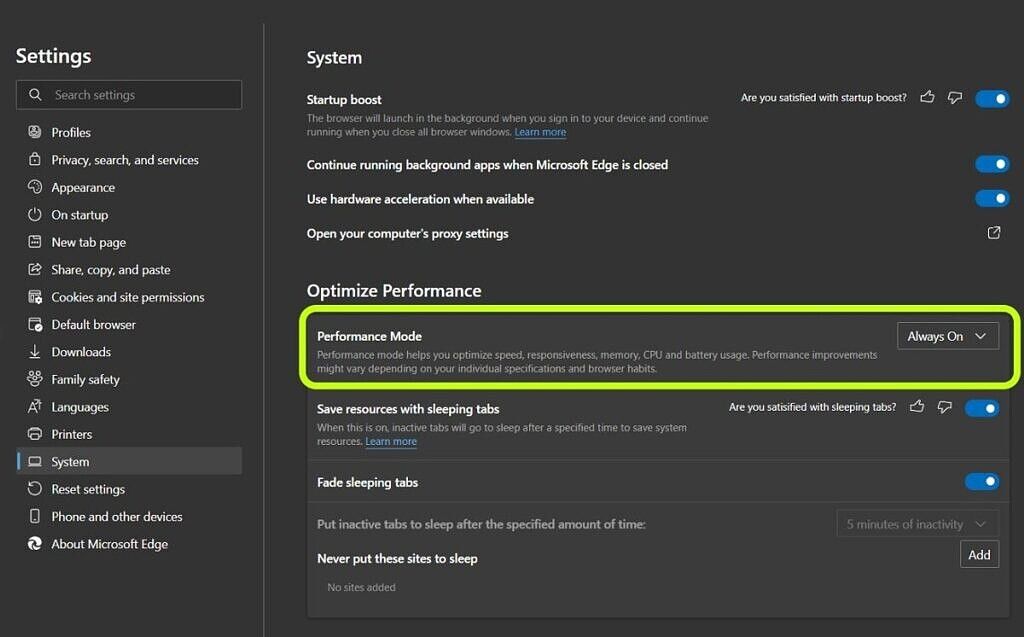Microsoft Edge was a big step forward for Microsoft compared to where they were with Internet Explorer. While Internet Explorer was considered slow and unpractical, Microsoft Edge was in a similar place to where browsers like Google Chrome were in terms of functionality back then. More recently, Edge switched over from their proprietary engine to the tried-and-tested Chromium engine that powers Chrome and a handful of other browsers, and usage numbers have skyrocketed since then, now being the second most used desktop browser, just behind Chrome. But modern browsers can be resource hogs, and you probably know this if you ever fired up Task Manager and took a peek at how much CPU and RAM your browser is eating up right now. Now, Microsoft Edge is adding a new "performance mode" to help mitigate this, as reported in Microsoft's forums.
The feature is rolling out right now on the Canary update channel, and it's meant to help you optimize "speed, responsiveness, memory, CPU and battery usage," according to the Settings page. The "battery usage" bit is important: while CPU and RAM usage may not be a really big deal on a desktop computer, it's a bigger deal on laptops, as putting a bigger load on your CPU and RAM can make your battery deplete more quickly, and can even wear out your battery in the long run. And in the case of some laptops, particularly some cheaper thin and light ones, the CPU and RAM can quickly be overwhelmed by intense browser usage. This Performance Mode would help mitigate this.
Among the changes, one notable one is that the Sleeping Tabs feature will be locked to five minutes when Performance Mode is toggled on. Sleeping Tabs, in case you don't know what that is, pretty much freeze tabs that are left open in the background, saving resources when they're not being used. This feature is rolling out now in the Canary channel, specifically version 91.0.856.0, so expect to wait a while if you're not comfortable using non-final software.


